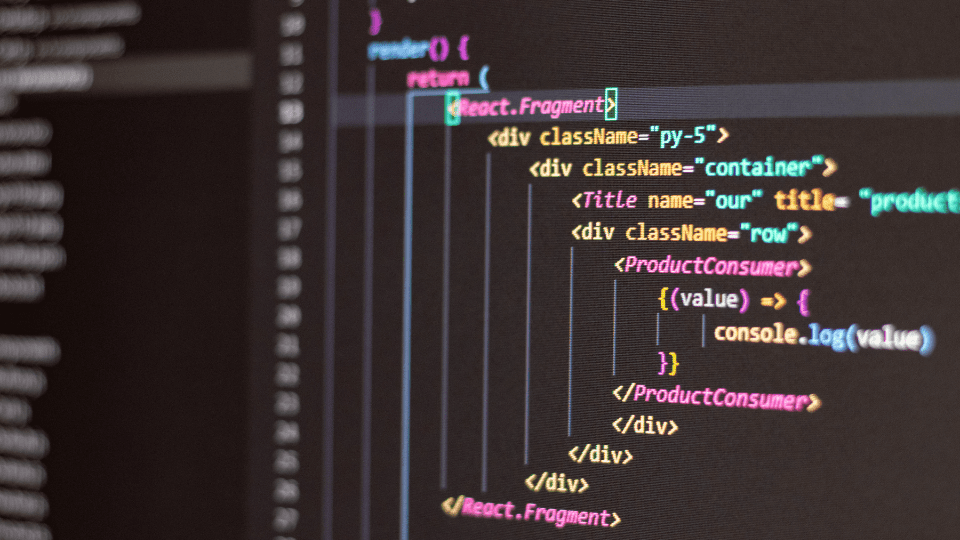The Software Development Life Cycle (SDLC) is an organized procedure that makes it feasible to produce affordable and excellent software in the quickest amount of time. The SDLC aims to create exceptional software that meets and exceeds all client expectations and requests. The Software Development Life Cycle (SDLC) is a comprehensive plan consisting of stages, or phases, that cover distinct processes and outputs. Following the SDLC reduces project risks and expenses related to alternative production processes while accelerating development.
History of Software Development Life Cycle (SDLC)
Rapid advancements in computer science occurred in the 1950s and 1960s. This quick evolution led to the development of a production framework, which gave rise to the SDLC we are familiar with today.
Computing needed to be more complex before the 1950s to require a methodical strategy such as the Software Development Life Cycle. The idea of organized programming arose as programming became more intricate and expansive. The SDLC had its start because structured programming eventually required more tactical development models.
Importance of Software Development Life Cycle (SDLC)
- It decreases project risks,
- It enhances customer relations,
- It quickens the pace of advancement,
- It facilitates easier project control and tracking,
- It offers a uniform structure that outlines tasks and results,
- It facilitates scheduling, estimating, and planning for projects,
- It lowers production costs overall and project management costs,
- It makes all parties engaged in the development process more aware of every facet of the life cycle.
How Software Development Life Cycle (SDLC) In UAE works?
The Software Development Life Cycle (SDLC) reduces software development costs while enhancing quality and speeding up output. The SDLC accomplishes these seemingly incompatible objectives by adhering to a strategy that eliminates the common dangers of software development projects. The first step in such a plan is to assess current systems for flaws.
It then goes on to specify the needs for the new system. The stages of analysis, planning, design, development, testing, and deployment are then used to produce the software. Anticipating costly errors such as neglecting to request input from the end-user or client might help SLDC avoid unnecessary rework and post-mortem repairs.
It’s also critical to understand that the testing phase is given much attention. Because the Software Development Life Cycle (SDLC) is a recurring approach, each process cycle requires code quality assurance. Many organizations put little effort into testing even though doing so saves them money, time, and rework. Write the appropriate tests with intelligence.
Let’s now examine each of the 7 Phases of SDLC:
7 Phases of Software Development Life Cycle (SDLC) In UAE
Phase 1: Planning
Planning, the first phase of software development, is determining the goal and extent of the program, akin to deciding our destination and selecting the most efficient path. In this stage, we identify the tasks that must be done and plan for their effective completion.
The group works together to comprehend end users’ needs and the product’s objectives. Essentially, we ask, “What issue will this software resolve?” and “What benefit will the user receive from it?”
The planning stage also includes a feasibility assessment. Product teams and developers assess the financial and technological obstacles that could impede the software’s advancement or success.
Phase 2: Requirements Analysis
Requirements analysis, the second phase of the Software Development Life Cycle (SDLC), aims to pinpoint and document the exact needs of the end users. The team’s goal at this stage is to determine the expectations of its users for the product. We refer to this as requirements collecting.
The project team gathers information from users, clients, analysts, and other stakeholders. To learn about the wants and expectations of the user, they hold focus groups, questionnaires, and interviews. Asking the appropriate questions and correctly understanding the answers are important steps in the process.
The group analyses the collected data by separating the desirable characteristics from the essential ones. Using this study, the team can better comprehend the software’s functionality, performance, security, and interface requirements.
Phase 3: Design
Developing the framework is the main focus of the design process. The development team defines the functionality and design of the software and is in charge of software engineering. The software product is the end outcome of this. The focus is on providing an overview of the database design, user interfaces, navigation, and software structure. This stage ensures that the software is easy to use and performs well.
What kind of tasks does the team work on then? Creating entity-relationship diagrams, data flow diagrams, and user interface mock-ups are important tasks. The group also determines integration points and system dependencies. They also establish the software’s limits, including those about hardware, performance, and other system-related variables.
Phase 4: Coding
In the Software Development Life Cycle (SDLC), the Coding phase is when developers and engineers start working on turning the software design into executable code.
The goal of this development phase is to create software that is user-friendly, effective, and functioning. Following the SDD and coding requirements, developers write the code using an appropriate programming language like Java. This document serves as a roadmap to ensure the software is in line with the goals established in previous stages.
Phase 5: Testing
Think of the Software Development Life Cycle (SDLC) Testing step as a thorough quality control check on a manufacturing line. That occurs when weak points are found. Software testing entails carefully reviewing the program to look for any errors or malfunctions that might have happened while Coding. The goal is to prevent software from malfunctioning before end users use it. And even point out areas that could be improved.
Setting precise parameters based on the needs of the software is the first step in the testing process. This entails determining the prerequisite software conditions and presenting several scenarios to investigate these prerequisites. This stage facilitates the development of a successful testing plan.
Phase 6: Deployment
Once a product has been painstakingly crafted, it’s time to push it into production and introduce it to the public. The carefully tested and optimized software is rolled out to end users during the Deployment phase.
A particular plan is implemented for the software’s deployment to guarantee that the user experience is not adversely affected. We may employ several techniques, such as Big Bang, Blue-Green, or Canary deployments, depending on the software and its target audience.
Phase 7: Maintenance
The maintenance phase of the software development life cycle is marked by ongoing support and development, which assures the program will perform as well as it can for the longest time and will satisfy customer expectations.
The main goal is to adjust to the software’s evolving requirements. This adaptation entails reacting to user input, fixing unforeseen problems, and updating the program to users’ changing needs. Refinement and adaptation are ongoing processes, similar to a gardener caring for their plot of land.
Bug fixes, patch implementation, and regular software updates are all included in maintenance chores. Another essential element is user support, which provides assistance and direction to users who need help with the product.

Popular Software Development Life Cycle (SDLC) Models
Several models that describe the steps involved in software development and maintenance are included in the Software Development Life Cycle (SDLC). The following are seven popular SDLC models:
Waterfall Model
This is a sequential and linear technique, meaning that each must be finished before going on to the next phase. Requirements, design, implementation, testing, deployment, and maintenance are among the steps.
Iterative Model
Repetitive development cycles are used in this methodology, enabling feedback and progress with each iteration. Phases are frequently repeated until a successful end product is produced.
Modest Model
This paradigm is more gradual in nature, breaking the system up into digestible chunks called increments, each representing a percentage of the functionality of the complete system. This method develops and delivers each increment independently.
Model Spiral
Both incremental and iterative model components are incorporated into the spiral model. Under this approach, planning, risk analysis, engineering, and critical review are repeated cycles that lead to development’s spiral advancement.
The Verification and Validation Model, or V-Model
View this as an evolution of the waterfall paradigm, emphasizing the interaction between the development and testing phases. Every development stage in this approach has a matching testing phase.
Agile Framework
The agile technique is a gradual, iterative process that prioritizes adaptability and cooperation amongst multidisciplinary teams. When an agile approach is implemented, requirements and solutions develop through collaboration and flexibility.
Rapid Application Development, or RAD Model
Giving other surfers props after a sick wave is not the point. On the other hand, the RAD approach emphasizes quick end-user feedback and rapid prototyping. Iterations and user feedback are used to improve and polish the product quickly.

Best Practices for the Software Development Life Cycle (SDLC) In UAE
Effective team-wide communication is the most crucial best practice to include in your SDLC. Success is more likely to occur with more alignment.
Symptoms of a properly run Software Development Life Cycle (SDLC) In UAE are as follows:
- the accomplishment of implementing a thorough application security program,
- norms for code quality,
- Enhanced inter-team cooperation,
- streamlined processes,
- cross-team participation over the course of the life cycle,
Software Development Life Cycle (SDLC) typical errors and difficulties
Several traps could seriously harm the adoption of the SDLC. More than sufficiently considering and fulfilling customer and stakeholder needs during the process is arguably the most serious error. This leads to a misinterpretation of the system requirements and, eventually, dissatisfaction with the final solution.
In addition, teams frequently need to catch up on requirements and specifics, and projects can go awry due to the complexity of the SDLC. A project can easily fall short of expectations if all guidelines and design plans are not strictly followed.

How does Software Development Life Cycle (SDLC) In UAE handle security?
A crucial component of any software development process is security. However, SDLC addresses security at every level through DevSecOps methods, unlike traditional software development, which treats security as a distinct stage.
As a DevOps extension, DevSecOps is an approach that stresses integrating security assessments across the whole software development life cycle (SDLC). It guarantees that the software is resistant to all possible threats and secure from initial design to the point of delivery. Code review, architecture analysis, penetration testing, and automated detection are examples of security assurance tasks the team performs during DevSecOps. These tasks are integrated into IDEs, code repositories, and build servers.
The Software Development Life Cycle (SDLC) Advantages
When used properly, the SDLC may provide maximum documentation and management control. Developers are aware of what and why to construct. Everyone sees a clear plan for achieving the goal and agrees on it upfront. Everyone is aware of the expenses and resources needed.
An SDLC implementation can become more of a barrier to development than a useful tool if certain mistakes are made. A poor initial knowledge of the system requirements may arise from neglecting to consider the needs of consumers and all other users and stakeholders. The SDLC’s benefits are realized only when the plan is diligently executed.
Conclusion
In conclusion, we now understand that a key framework for the better and more organized production of efficient software programs is the Software Production Life Cycle, or SDLC, in software engineering. The stages of the SDLC are essential for enabling some excellent and novel solutions that benefit people and businesses in a world where technology is advancing rapidly. To efficiently accomplish software development goals, it’s also preferable to modify SDLC concepts.






